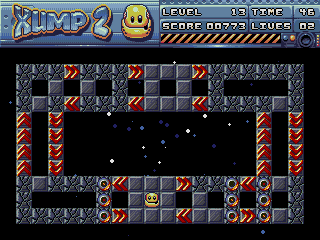x7r remade Retroguru‘s puzzle game Xump 2 for the PC Engine Super CD using the HuC fork by Elmer. It’s gift, release today, for everyone out there who was missing some activity from Retroguru. Enjoy the game, feedback is welcome! Also check out the versions for Sega Mega Drive / Sega Genesis and Atari Lynx! …
Continue reading Xump 2 v1.0 (PC Engine Super CD) (Game)
Category:PC Engine / TurboGrafx-16
The TurboGrafx-16, known as the PC Engine outside North America, is a fourth-generation home video game console designed by Hudson Soft and sold by NEC Home Electronics. It was the first console marketed in the fourth generation of game consoles, commonly known as the 16-bit era, though the console has an 8-bit central processing unit (CPU) coupled with a 16-bit graphics processor. It was released in Japan in 1987 and in North America in 1989. In Europe, the console is known as the PC Engine, after the Japanese model was imported and distributed in the United Kingdom and France from 1988. In Japan, the system was launched as a competitor to the Famicom, but the delayed United States release meant that it ended up competing with the Sega Genesis and later the Super NES.
The console has an 8-bit CPU and a dual 16-bit graphics processing unit (GPU) chipset consisting of a video display controller (VDC) and video color encoder. The GPUs are capable of displaying 482 colors simultaneously, out of 512. With dimensions of just 14 cm × 14 cm × 3.8 cm (5.5 in × 5.5 in × 1.5 in), the Japanese PC Engine is the smallest major home game console ever made. Games were released on HuCard cartridges and later the CD-ROM optical format with the TurboGrafx-CD add-on. The “16” in its North American name and the marketing of the console as a 16-bit platform despite having an 8-bit CPU was criticized by some as deceptive. [Text from Wikipedia]

